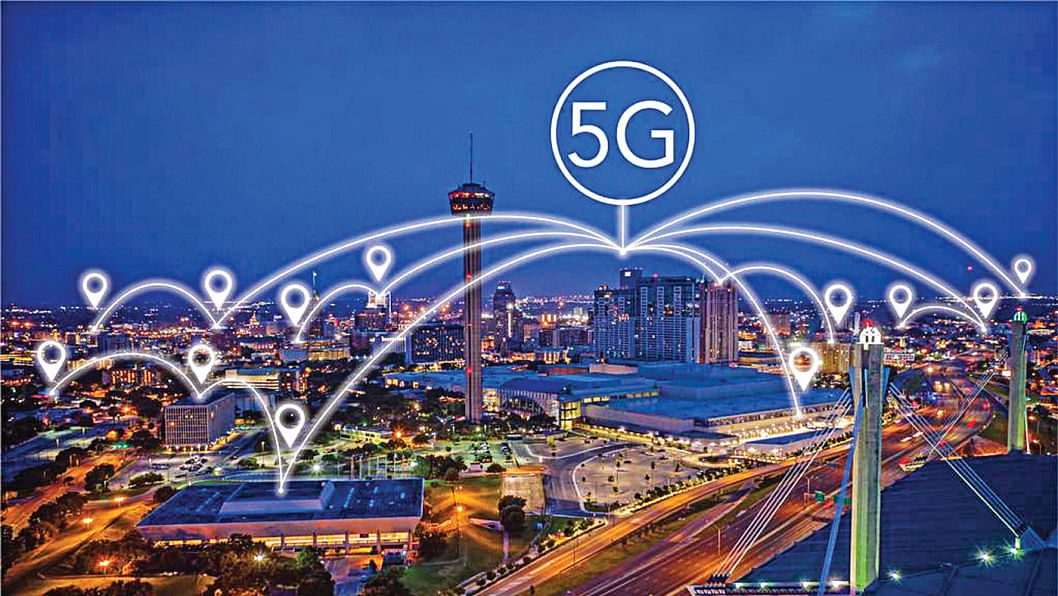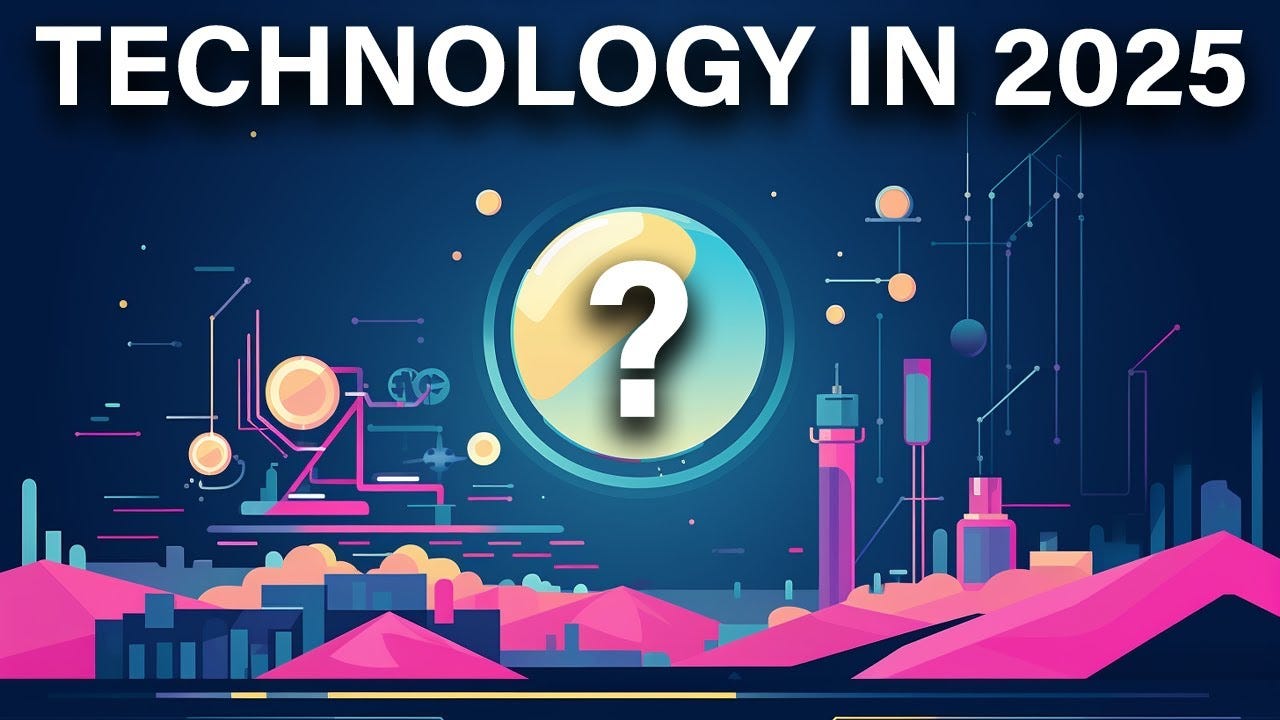Curious about which tech trends will shape our world in 2025? As we speed through an era of rapid technological advancements, understanding the most impactful developments can give you an edge in adapting to the future. How will innovations like generative AI, 5G, and sustainable tech transform industries, improve personal experiences, or unlock new business models?

This guide explores the top 05 emerging technology trends expected to define 2025. From artificial intelligence (AI) reshaping customer experiences to quantum computing unlocking new research potentials, these trends are creating vast opportunities and competitive advantages. Learn how these technologies could influence fields like healthcare, finance, and manufacturing, while driving productivity, enhancing user engagement, and enabling eco-friendly solutions.
Ready to dive into the trends shaping tomorrow? Let’s explore the advancements you need to know—and how they’re already impacting the way we live and work. Here’s your roadmap to the most transformative technologies of 2025 and the opportunities they bring.
Top 05 New Technology Trends in 2025
Whether you are a business leader with an enthusiasm for technology or simply intrigued by what the future has in store for technology, this guide will walk you through the top 05 technology trends driving 2025. Embrace these trends, and prepare to stay ahead of the curve in a future propelled by technological innovations.
1. Artificial Intelligence (AI) and Machine Learning (ML)
AI and ML refer to technologies that enable machines to learn from data and also take decisions autonomously. These large technologies through this way have been applied in different areas, from voice assistants to autonomous vehicles, predictive analytics, and detection methods against fraud.

Impact
AI and ML are rapidly changing industries through automation in the areas of task, decision-making, and insights from data analysis. For e.g, To take a general case, individualized medicine and better diagnostics are now available because health applications powered by AI can consume large swaths of patient data to make predictions based on identified patterns.
Market Size and Growth
The AI markets are estimated to ascend to total market values of USD 190.61 billion by 2025, boosted by growing adoption across industry verticals, notably healthcare, finance, and retail. Helping that momentum are the increased uptake in deep learning, natural language processing, and computer vision.
Rates of Adoption
In more developed countries where businesses are adopting AI, with emerging markets catching up, the investment in digital infrastructure and technologies grows at a higher rate. Integrating AI into corporate business process cores is increasingly prevalent as companies seek means of boosting both efficiency and customer experience.
2. 5G
5G refers to the fifth generation of mobile network technology, along with speed, low latency, and high capacity. It enables seamless connectivity with devices and applications. It will drive the future of IoT, AR/VR, smart cities, and other nascent innovations that, by and large, need the underwater infrastructure capability for the conduction of business such as autonomous vehicles and remote surgeries. Enhanced mobile broadband will support high-definition video streaming, gaming, and virtual meetings.

Market Size and Growth
The world 5G market is estimated to reach $667.90 billion by 2026, growing at a Compound Annual Growth Rate of 122.3% throughout the forecast period 2021-2026. The growth is majorly fueled by demand for better internet speeds with a continuous rise in the number of connected devices.
Rates of Adoption
Not only that, in fact, the US together with China and South Korea are leading in initiating that implementation and, therefore, many other countries are speeding up their tariff action strategies. Massive economics alongside innovation is going to result from the adoption of 5G globally.
Long-term Key Developments
- Network Slicing: Network Slicing is the process whereby operators can create multiple virtual networks out of one single physical 5G network in order to optimize performance for various applications.
- eMBB (enhanced mobile broadband): eMBB provides a data rate increased to extreme values and increased connection—a very important feature for services with real-time streaming and mobile applications.
3. Internet of Things (IoT)
IoT stands for Internet of Things. A network of things, the Internet of Things is a variety of physical devices installed with the relevant technologies that enable them to collect and communicate data over a network. Such devices can be sensors, appliances, and machineries that collect and share data.
Impact
The Internet of Things is turning every industry sector into a smart sector, whether in smart homes, cities, or industrial processes. It enables real-time monitoring, predictive maintenance, and increased efficiency. For example, smart homes optimize energy usage, and IIoT monitors equipment health while predicting failures before they occur.
Market Size and Growth
With the massive adoption in end-use industries like manufacturing, healthcare, and transportation, the IoT market will be pegged at $1.6 trillion by the year 2025. One of the most critical essential factors includes proliferation in the Internet of Things and advancements in data analytics.
Adoption Rates
IoT adoption is particularly high in the sectors that derive a lot of help from automation and data-driven decision-making. The discussed sectors showing good adoption rates include smart city initiatives and industrial automation.
Key Developments
- Security in IoT: This will continue to be the biggest issue to consider as more devices are connected, making sure that IoT networks are protected from cyberthreats. Development of advanced encryption and security protocols are currently being carried out for data protection.
- Edge Computing: It minimizes latency and bandwidth usage to facilitate faster, more efficient IoT applications by processing data closer to the source.
4. Blockchain Technology
Blockchain is a decentralized ledger technology, meaning it ensures the security and transparency of the transactions. It underpins cryptocurrencies such as Bitcoin and Ethereum, but it goes way beyond just that.
Impact
Blockchain keeps on fully enforcing industries through secure, transparent, and decentralized transaction techniques. The most impactful results can be seen within the contexts of finance, supply chain, and healthcare. Examples include boosting transparency in supply chains through an unalterable record of product origin and movement.
Market Size and Growth
The blockchain technology market will crescendo to $39.7 billion in 2025 as its adoption in different industries keeps increasing. Valuable for any sector that demands high security and transparency, this is because of the technology’s potential to provide secure and tamper-proof records.
Adoption Rates
Adoption is high within the finance industry. Growing interest is seen in other areas such as supply chain management and healthcare as well. Companies explore Blockchain for the sake of decreasing fraud, elevation in traceability, and improvement in data security.
Key Developments
- Smart contract: Types of contract whose general execution happens when prespecified conditions are met. This cuts out most middlemen and operationalizes efficiency.
- DeFi: Blockchain-based financial services that enable peer-to-peer transactions free from banking intermediaries.
5. Augmented Reality (AR) and Virtual Reality (VR)
The AR and VR technologies will give an interactive experience by rendering digital information either on top of the physical world (augmented reality) or inside totally virtual environments. These technologies are now well applied in gaming, education, training, and a long list of several other applications.
Impact
AR and VR technologies go on to make user experiences effective in genres like gaming, educational training, healthcare, and real estate. For example, AR can assist the surgeon by providing real-time data during procedures, whereas VR can serve virtual tours for consumers in real estate.
Market Size and Growth
The AR and VR market is estimated to grow to $209.2 billion by 2025, propelled by advancements in hardware and software. This great leap forward will be accelerated by the wider usage in the enterprise application space, in areas ranging from consumer entertainment to other verticals and horizontals.

Rates of Adoption
High rate of adoption in gaming and entertainment, with growing interest in enterprise uses in training, remote support, and virtual meetings.
Key Developments
- MR: This combines a bit of both AR and VR to come up with emerging interactive experiences in professional training as well as in simulation.
- 5G Integration: It brings more speed and reduced latency, thus improving the performance of AR/VR applications.
Trends in 2025
